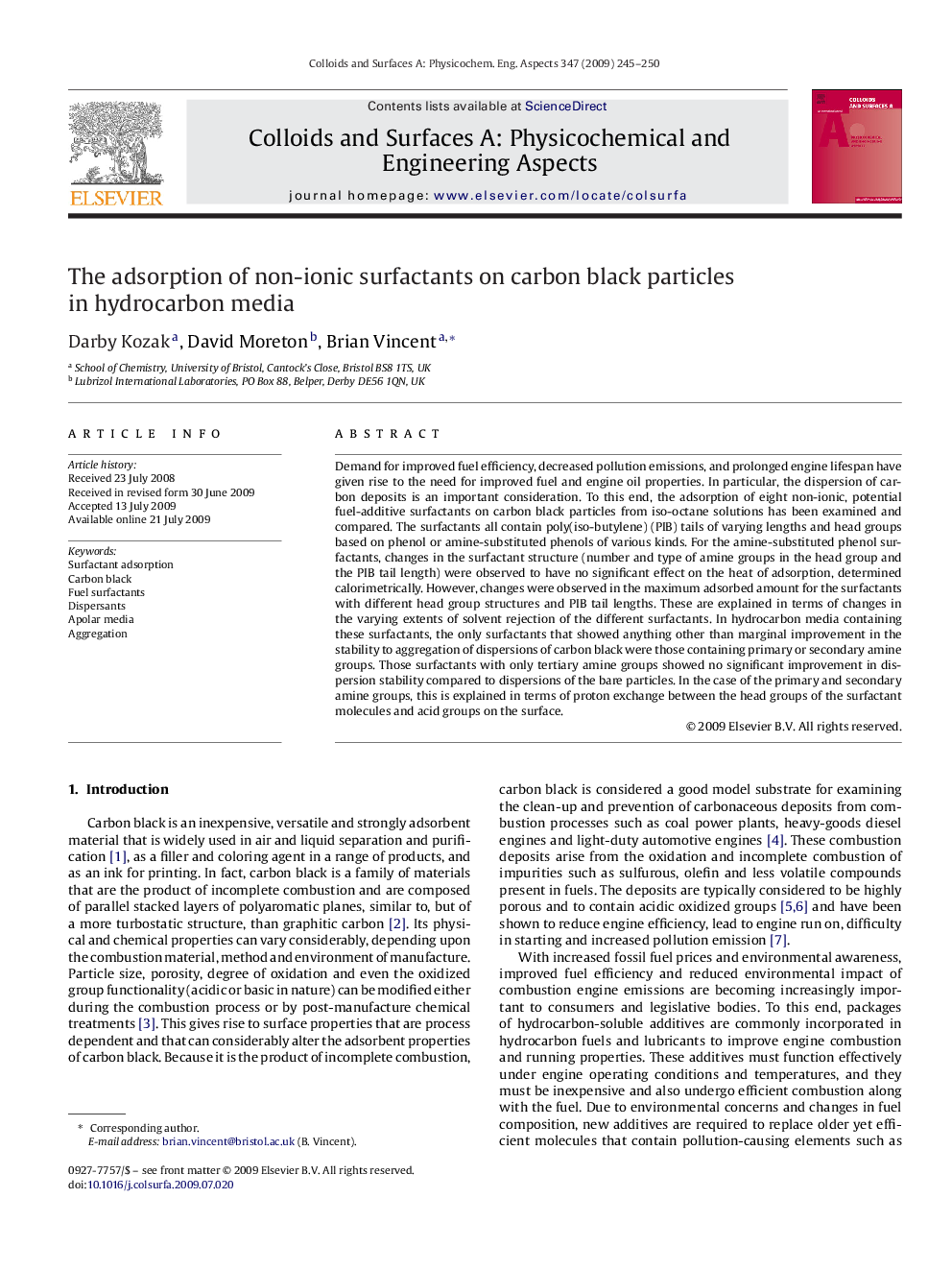| Article ID | Journal | Published Year | Pages | File Type |
|---|---|---|---|---|
| 595862 | Colloids and Surfaces A: Physicochemical and Engineering Aspects | 2009 | 6 Pages |
Abstract
Demand for improved fuel efficiency, decreased pollution emissions, and prolonged engine lifespan have given rise to the need for improved fuel and engine oil properties. In particular, the dispersion of carbon deposits is an important consideration. To this end, the adsorption of eight non-ionic, potential fuel-additive surfactants on carbon black particles from iso-octane solutions has been examined and compared. The surfactants all contain poly(iso-butylene) (PIB) tails of varying lengths and head groups based on phenol or amine-substituted phenols of various kinds. For the amine-substituted phenol surfactants, changes in the surfactant structure (number and type of amine groups in the head group and the PIB tail length) were observed to have no significant effect on the heat of adsorption, determined calorimetrically. However, changes were observed in the maximum adsorbed amount for the surfactants with different head group structures and PIB tail lengths. These are explained in terms of changes in the varying extents of solvent rejection of the different surfactants. In hydrocarbon media containing these surfactants, the only surfactants that showed anything other than marginal improvement in the stability to aggregation of dispersions of carbon black were those containing primary or secondary amine groups. Those surfactants with only tertiary amine groups showed no significant improvement in dispersion stability compared to dispersions of the bare particles. In the case of the primary and secondary amine groups, this is explained in terms of proton exchange between the head groups of the surfactant molecules and acid groups on the surface.
Related Topics
Physical Sciences and Engineering
Chemical Engineering
Colloid and Surface Chemistry
Authors
Darby Kozak, David Moreton, Brian Vincent,
